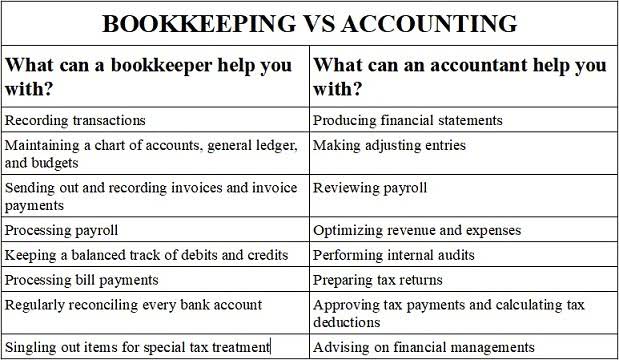General Rules for Debits and Credits Financial Accounting

Let’s imagine the owner of this ice cream shop invested $10,000 upfront upon opening the business. The reasoning behind this rule is that revenues increase retained earnings, and increases in retained earnings are recorded on the right side. Expenses decrease retained earnings, and decreases in retained earnings are recorded on the left side. The Equity (Mom) bucket keeps track of your Mom’s claims against your business. In this case, those claims have increased, which means the number inside the bucket increases. Let’s do one more example, this time involving an equity account.

The CFPB has determined that these updated Y–14 data yield a ratio that is consistent with the determination that a $8 late fee safe harbor threshold would recover the average Larger Card Issuer’s pre-charge-off collection costs. As shown in Figure 2a above, the ratio has been above five for those additional 14 months and above six for the last 11 months. In the same vein, many credit union commenters asserted that additional fees and higher rates would have a negative https://www.bookstime.com/ impact on all credit union members and potential members, including those unbanked and underbanked communities where credit unions are seeking to expand access to financial services. Some noted that credit unions may need to balance reduced fee revenue by cutting spending on branch expansion and staff to serve their membership. Other commenters noted that these losses, and thus the adverse consequences, would be magnified in the current inflationary environment.
G. Other Consequences to Consumers of Late Payment
The debits and credits method results in a well-organized general ledger that makes financial reporting as easy as it can be. As was the case in the last transaction, the cash account will show an increase in the debit column of $5,000. But that $5,000 will also appear in an account likely called notes payable. Notes payable accounts typically represent the amount of money that a business has yet to pay back to a lender. In this system, only a single notation is made of a transaction; it is usually an entry in a check book or cash journal, indicating the receipt or expenditure of cash. A single entry system is only designed to produce an income statement.
The commenter further asserted that consumers, including small businesses, may choose to obtain their credit cards from small depository institutions that offer credit cards for a variety of reasons, including the ability of consumers with low credit scores to obtain a credit card that may otherwise be unavailable. The commenter also expressed concern that if the safe harbor amount does not cover the costs of providing the service, small depository institutions may decide to stop issuing credit cards. One of the credit union commenters urged the CFPB to provide a breakdown of the components used to arrive at the proposed $8 late fee safe harbor and the source rules of debits and credits of the data. One of the industry trade association commenters noted that the CFPB failed to provide a clearly defined list of data inputs that banks provide in reporting collection costs on the Y–14 data. The CFPB understood that card issuers report two payment amounts when responding to Y–14 collection efforts, a minimum payment calculated just for that billing cycle and the total amount that is required to be paid that billing cycle which includes missed payment amounts or fees assessed. The CFPB proposed this revision to comment 52(b)(2)(i)–1 to address any potential confusion about the payment amount to which the proposed 25 percent limitation would apply.
Understanding the basics: Debit vs Credit
Many banks and credit unions and industry trade associations, a law firm representing several card issuers, and a financial regulatory advocacy group expressed concerns about the potential negative impacts a 15-day courtesy period may have on consumers. This final rule may benefit consumers indirectly by making late payments less profitable to Larger Card Issuers and thereby increasing Larger Card Issuer incentives to take steps that will encourage on-time payment. Consumers may benefit from issuer practices such as more effective reminders or convenient payment options.

The CFPB expects that these other methods, and the negative consequences resulting from missed payments, will decrease the likelihood of late payments not only in cases where card issuers consider the deterrent effects of lower late fees to be insufficient, but for other reasons as well. As discussed above, Larger Card Issuers also may offset lost revenue from lower late fees by increasing interest rates, which would indirectly make late payments more costly than without this response. Also, issuers may have less ability to charge consumers higher late fees to maximize profits and thus may be more inclined to take other, more efficient steps to deter late payments, including providing timely reminders of an upcoming due date, well-chosen due dates aligned with cardholders’ cash flow, and encouraging automatic payments.
The Ultimate Guide to Debit and Credit in Accounting
Similarly, the word “credit” has its historical roots in the Latin word credere, meaning “to believe.” In accounting, this is often abbreviated as “Cr.” Historically, the word “debit” derives from the Latin word debere, which means “to owe.” In accounting, this has been shortened to “Dr.” It is important to go back and find the mistake to keep your accounts accurate. Adam Hayes, Ph.D., CFA, is a financial writer with 15+ years Wall Street experience as a derivatives trader.
- In studying the accounting equation, you will notice that balance is always the desired outcome.
- In certain consumer letters, consumers who supported the proposal included additional information, such as their experiences with late fees.
- Liabilities are on the opposite side of the accounting equation to assets, so we know we need to increase the liability account by crediting it.
- Emerging technologies like artificial intelligence and machine learning have significantly impacted credit and debit processes in accounting firms.
- All accounts that normally contain a debit balance will increase in amount when a debit (left column) is added to them and reduced when a credit (right column) is added to them.
They let you see where cash is coming from, and where it’s going. Regardless of what elements are present in the business transaction, a journal entry will always have AT least one debit and one credit. You should be able to complete the debit/credit columns of your chart of accounts spreadsheet (click Chart of Accounts). Mastering the art of managing debit and credit entries is the key to unlocking the door to financial prowess. With the rapid evolution of technology, embracing innovative accounting software and automation tools has become paramount for businesses.





